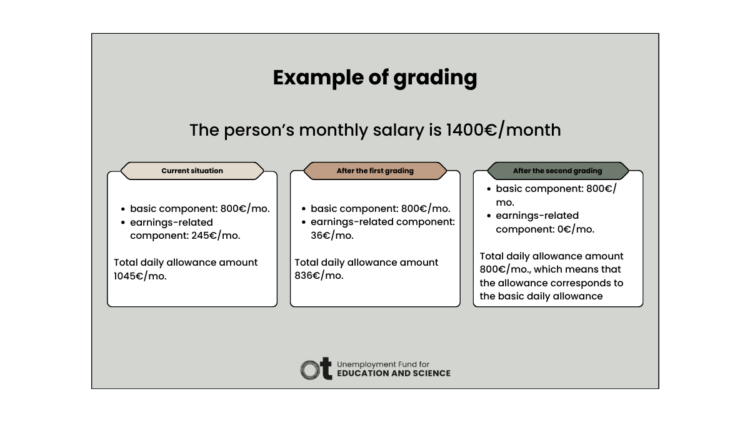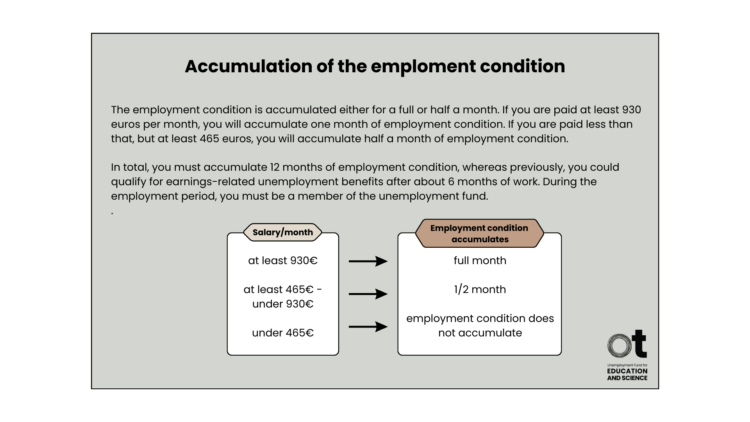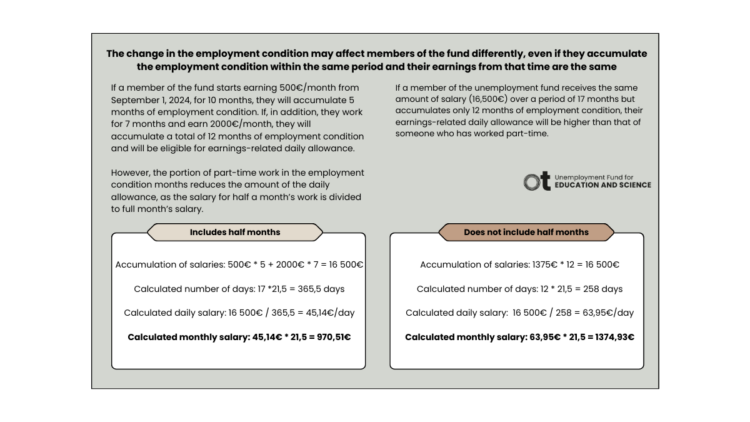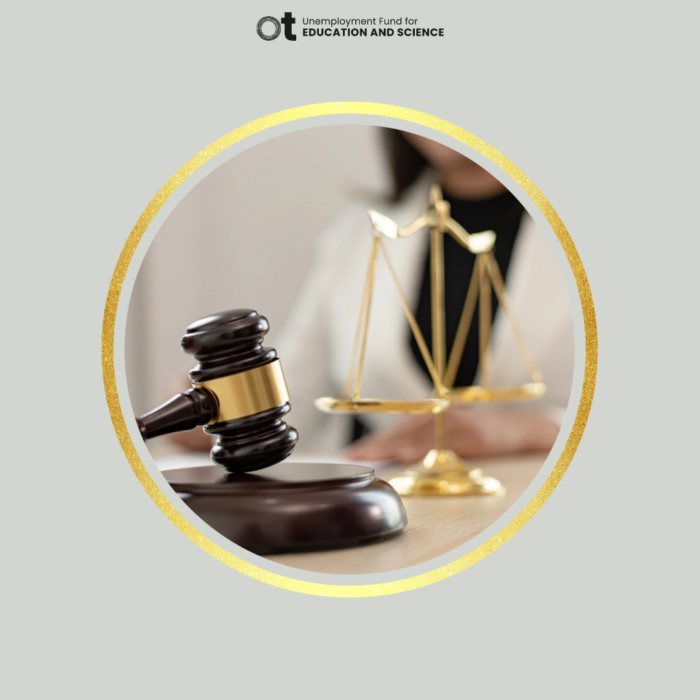Unemployment benefits are reduced for part-time workers
The new cuts to unemployment benefits came into effect at the beginning of September. The hardest hit by these cuts are partially employed individuals, those working part-time or on short-term contracts, and industries with a high prevalence of part-time work. Part-time work or accepting shorter-term contracts is no longer as attractive, and the unemployment benefit cuts implemented earlier in the spring seem to have decreased the acceptance of these types of jobs.
The extension of the employment condition and the grading of unemployment benefits are the most significant changes to unemployment insurance, but one should not underestimate the cuts made to unemployment benefits for those over 58 years old. The cuts made this year significantly impact the livelihood of virtually every unemployed person—there are hardly any winners among the unemployed. However, those working part-time are likely to be the most affected.
The Federation of Unemployment Funds in Finland (TYJ) reported at the end of August that the number of partially employed individuals among those receiving income-related unemployment benefits has decreased (The proportion of partially employed among income-related benefit recipients has decreased – TYJ(you move to another service)). Last year, 99,000 people received benefits that took into account the impact of earnings. This represents 38% of all recipients of earnings-related daily allowance. However, the number of those working part-time has significantly decreased since last fall.
If the change is permanent and partial employment decreases, it will affect not only job seekers but also employers. Every job opportunity keeps the unemployed engaged in the workforce and can ideally lead to full-time employment. During part-time work, individuals have also been able to retrain, find a new career, or gain temporary flexibility in challenging life situations.
The cuts made this year significantly impact the livelihood of virtually every unemployed person—there are hardly any winners among the unemployed. However, those working part-time are likely to be the most affected.
However, the majority of those partially employed are seeking full-time work, and this is not a choice they make. Part-time workers often end up with evening, night, shift, and weekend jobs, which can be associated with negative welfare outcomes, especially if the part-time work is involuntary. Additionally, involuntary part-time work is linked to working poverty. Cutting unemployment benefits for these individuals will not only lead to a deterioration in the situation of individuals and families but also increase the need for other forms of social benefits.
Part-time work provides employers with an opportunity to seek flexibility in labor costs, which is why there have previously been incentives in the unemployment benefits system for accepting part-time work. For example, in the service sector, it is crucial to quickly find employees for short-term or part-time positions. The labor market position of part-time workers has also been so weak that undesirable tasks and shifts are often filled by them.
In the spring, the 300-euro standard entitlement was removed from unemployment benefits, which had ensured that even small part-time jobs were worth accepting. Earnings under 300 euros did not affect the daily allowance in any way. Even if the salary was 500 euros, only 100 euros of that amount would reduce the earnings-related daily allowance.
From an employment perspective, it is worth taking advantage of and accepting every job opportunity. Furthermore, the earnings-related daily allowance provided by unemployment funds will continue to offer significant protection during unemployment.
A significant cut in unemployment benefits specifically for part-time and low-income individuals is the graded unemployment benefits system. In this system, the earnings-related daily allowance decreases as unemployment continues. The allowance is first reduced by 20% after it has been paid for 40 unemployment days. It is further cut by 25% of the full earnings-related allowance after 170 unemployment days. For those receiving a low earnings-related daily allowance, the grading means that the earnings-related component is completely eliminated, leaving only the basic component equivalent to the basic unemployment allowance.

The upcoming change in the employment condition will also negatively impact the unemployment benefits for partially employed individuals. The changes in the employment condition will make it difficult to predict how a large portion of part-time work or fixed-term employment will affect unemployment benefits. Unemployed individuals will increasingly need to consider whether it is worth accepting any job if the impact on their unemployment benefits is hard to anticipate.
From an employment perspective, it is worth taking advantage of and accepting every job opportunity. Furthermore, the earnings-related daily allowance provided by unemployment funds will continue to offer significant protection during unemployment. We are here at the fund to help and advise each member. I hope that our members will contact us if they have any concerns about unemployment benefits or if the changes seem complicated to understand.



Jenni Korkeaoja
Head of Unemployment Fund
A humane trail runner who enjoys the bright spring sun and the chirping of birds.
jenni.korkeaoja@opetusjatiede.fi




